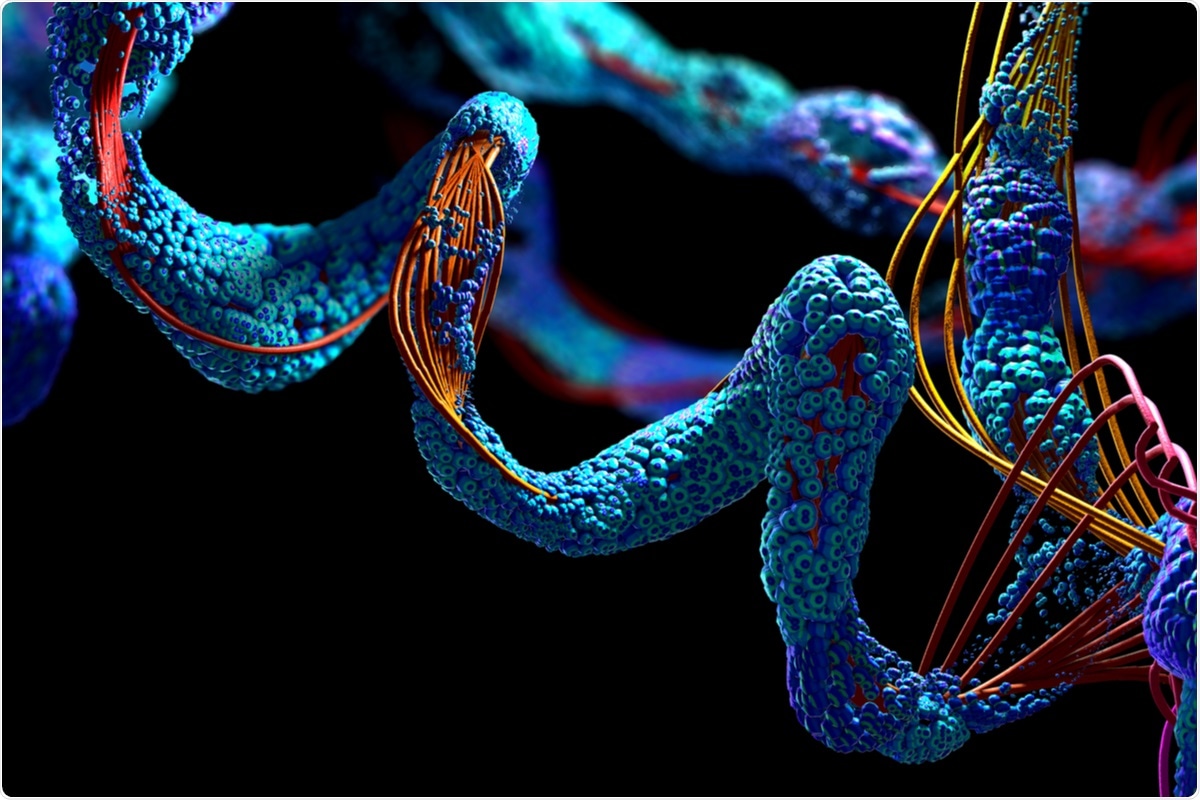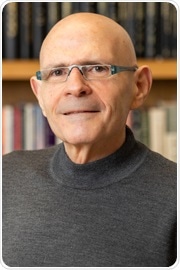 Thought LeadersDr. Samuel StuppProfessor of Chemistry, Materials Science and Engineering, Medicine, and Biomedical EngineeringNorthwestern UniversityIn this interview, News-Medical speaks to Dr. Stupp about his recent research into a therapy involving dancing molecules for the treatment of severe spinal cord injury.
Thought LeadersDr. Samuel StuppProfessor of Chemistry, Materials Science and Engineering, Medicine, and Biomedical EngineeringNorthwestern UniversityIn this interview, News-Medical speaks to Dr. Stupp about his recent research into a therapy involving dancing molecules for the treatment of severe spinal cord injury.Please can you introduce yourself and tell us what inspired your recent research into the treatment of severe spinal cord injuries?
I am Samuel Stupp, Professor of Chemistry, Materials Science and Engineering, Medicine, and Biomedical Engineering at Northwestern University. I am also the director of the Simpson Querrey Institute for BioNanotechnology at Northwestern University.
I have been interested in treating spinal cord injuries for about 15 years because it is a major societal need that will dramatically improve the quality of life for patients who were victims of severe injuries.
Therapies that can prevent individuals from becoming paralyzed after major trauma or disease have been studied for decades but still remains a major challenge for scientists. Why is this, and how could your new research provide hope for people suffering spinal cord injuries?
The challenge is rooted in the biological fact that the central nervous system, which includes the brain and the spinal cord, has a very limited ability to repair itself or regenerate. The hope in our research is that we could mimic in therapeutic systems the natural way in which proteins signal cells.
Your therapy involves the innovation of tuning molecule movement for easier receptor binding. How was this done?
We were able to control the movement of molecules in our therapy by changing their chemical structure, specifically by mutating their amino acid sequences. These subtle changes in the structure had a large effect on the intensity of their motion.
 Image Credit: Christoph Burgstedt/Shutterstock.com
Image Credit: Christoph Burgstedt/Shutterstock.com
How does managing the movement of these molecules affect the efficacy of the therapy?
Specifically, we made filaments with thousands to hundreds of thousands of molecules. We discovered that if clusters of these molecules move collectively (dance in a metaphoric way), they can more effectively activate the cell receptors on cell surfaces that initiate repair and regeneration. This works because receptors themselves move a lot, and therefore they are “moving targets” for the signals that activate them. This could apply to many therapies for regeneration and cure for diseases.
Once the moving molecules have found their receptor, what happens next?
After the moving molecules find their receptors, a cascade of reactions occurs within the cells which eventually results in the expression of genes (production of proteins) important in repair and regeneration.
How do the synthetic signals used in this study differ from natural proteins needed for these biological responses?
The synthetic signals contain amino acid sequences present in the natural proteins that activate receptors. We found that these segments, which are tiny compared to proteins, are sufficient to activate the receptors.
Overall, how does this therapy improve spinal cord injuries?
One signal in our filaments can regenerate axons, the “electrical cables” of neurons in the cord that allow us to move and sense. It also decreases the amount of scar formed after the injury, which impedes repair and regeneration.
A second signal can rebuild the blood vessels in the injured cord, which is critical for neurons to survive and for myelin to reform around axons. Myelin is important in the conduction of electrical signals in the cord.
 Image Credit: Olena Yakobchuk/Shutterstock.com
Image Credit: Olena Yakobchuk/Shutterstock.com
What are the applications of this new therapy?
Based on the model investigated in our publication, the initial application could be the treatment of acute injuries to avoid paralysis after severe trauma to the cord or to ameliorate the impact of injury. However, we are working to adapt the same therapy to the chronic injury that occurred much earlier or even the treatment of stroke, brain injuries, and neurodegenerative diseases.
What further research needs to be carried out before this therapy can be used within humans?
We are now working on adapting the therapy for people living with injuries, but we must design new delivery mechanisms and figure out how to remove, at least partially, the scar that has formed. To use the therapy in humans, we need to conduct certain tests to make sure it is safe to use.
What are the next steps for you and your research into severe spinal cord injuries?
The next steps will be to approach the FDA so that they can tell us what additional tests they will require to approve the use of the therapy in humans.
About Dr. Stupp
Dr. Stupp is the director of the research. His career in science has led to the development of the structures used in this therapy, namely self-assembling molecules that create “supramolecular polymers” (nanoscale filaments) in which molecules are bonded by weak forces and are therefore able to be dynamic and move to signal receptors. The filaments mimic the architecture of the fibrils that exist around cells, which could also explain why they are so effective at signaling them.
His career in science has led to the development of the structures used in this therapy, namely self-assembling molecules that create “supramolecular polymers” (nanoscale filaments) in which molecules are bonded by weak forces and are therefore able to be dynamic and move to signal receptors. The filaments mimic the architecture of the fibrils that exist around cells, which could also explain why they are so effective at signaling them.
Posted in: Thought Leaders
Tags: Amino Acid, Blood, Blood Vessels, Brain, Cell, Central Nervous System, Chronic, Efficacy, Genes, Medicine, Molecule, Myelin, Nervous System, Neurodegenerative Diseases, Neurons, Paralysis, Polymers, Receptor, Research, Scar, Spinal Cord Injury, Stroke, Trauma

Written by
Danielle Ellis
Danielle graduated with a 2:1 in Biological Sciences with Professional Training Year from Cardiff University. During her Professional Training Year, Danielle worked with registered charity the Frozen Ark Project, creating and promoting various forms of content within their brand guidelines.Danielle has a great appreciation and passion for science communication and enjoys reading non-fiction and fiction in her spare time. Her other interests include doing yoga, collecting vinyl, and visiting museums.
Source: Read Full Article
